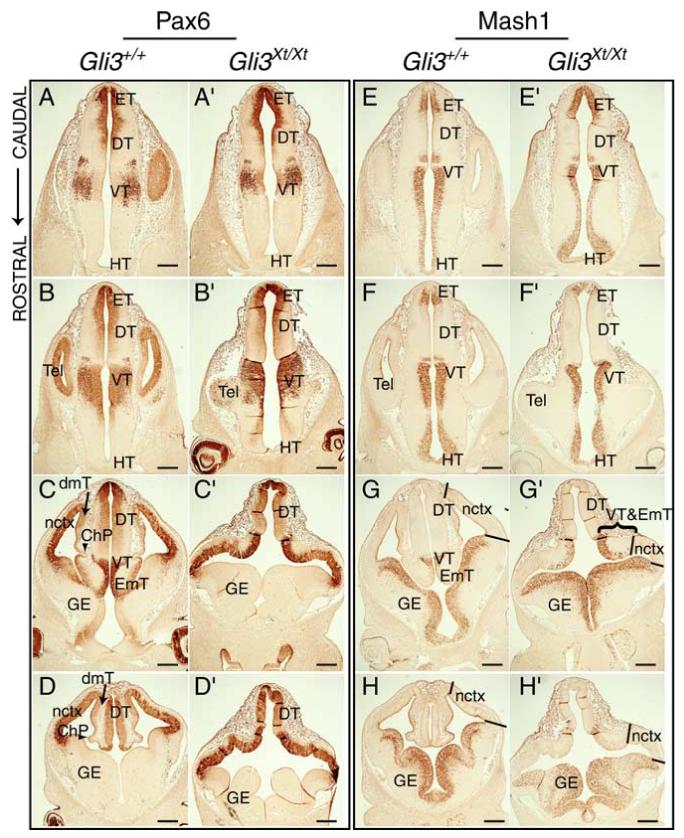Figure 2.

Pax6 and Mash1 immunoreactivity in the forebrain of E12.5 wild-type (Gli3+/+) (A-D, E-H) and Gli3 mutant (Gli3Xt/Xt) (A’-D’, E’-H’) embryos in comparable caudal-to-rostral coronal sections. In the diencephalon, Pax6 expression is observed in the epithalamus (ET) and dorsal (DT) and ventral (VT) thalamus, in both wild type (A, B) and mutants (A’, B’). In wild-type diencephalon, Pax6 expression is also evident in the ventricular zone of the eminentia thalami (EmT) (C). In wild-type telencephalon (Tel), Pax6 expression is observed in the neocortex (nctx) and the dorsomedial telencephalon (dmT, indicated by an arrow) and is absent from the ventral telencephalon [ganglionic eminences (GE)] (C, D). The arrowheads in C and D point to lack of Pax6 expression in the choroid plexus (ChP). In the mutant, Pax6 staining is continuous throughout the diencephalon and dorsal telencephalon, and the boundary between these two structures is not recognized (C’, D’). As in wild type (C, D), no Pax6 staining is observed in the ganglionic eminences in the mutant (C’, D’). Mash1 expression is observed in the epithalamus, ventral thalamus, hypothalamus (HT), and ganglionic eminences, in both wild type (E-H) and mutants (E’-H’). The neocortex is negative for Mash1 in both wild type (H, I) and mutant (area between the lines in G’, H’). The bracket in G’ labels a diencephalic region that corresponds to the mutant ventral thalamus and eminentia thalami. Tel, Telencephalon. Scale bars, 250 μm.
